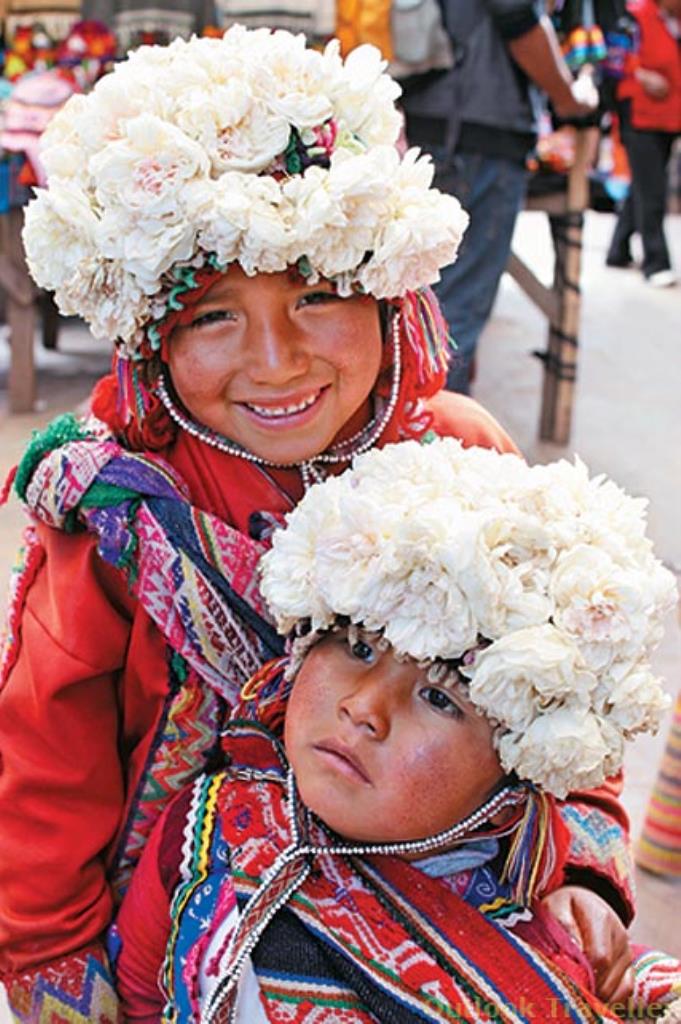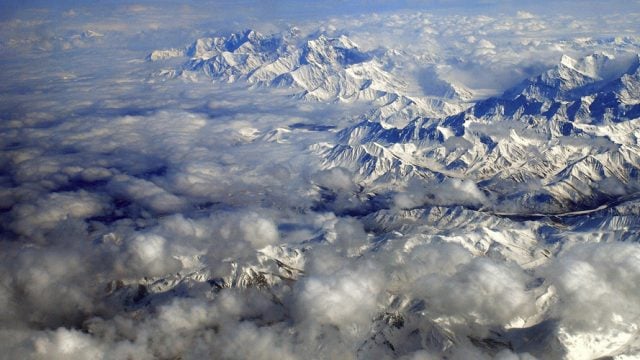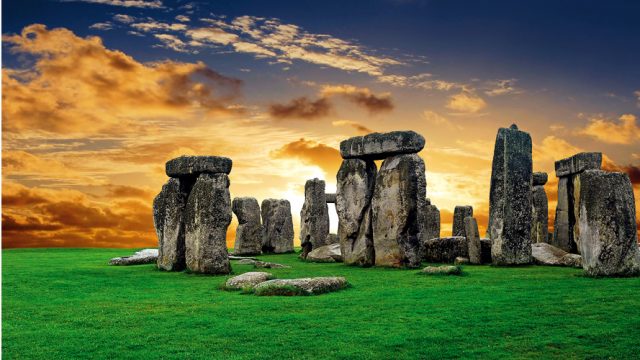A friend once told me that Peru has the best cuisine in the world. Naturally, I scoffed
A few years down the line, I decided to visit the same friend in Peru to confront his cocky claims about Peruvian cooking.
Lima greeted me as a bustling, cosmopolitan capital city, comparable to any across the globe. My friend seemed to be on a mission to prove his boasts right and so began with comida criolla (Creole food). At the huge buffet spreads in some of Lima’s best restaurants, I felt on the verge of discovering something special. An eclectic medley of flavours and textures, comida criolla can be attributed to the influence of native Peruvian ingredients combined with the cuisines imported by waves of immigrants from Spain, China, West Africa, Italy and Japan.
The result is a type of cooking with an incredible array of tastes and textures. From the classic Peruvian staple, lomo saltado (strips of beef stir-fried with onions, peppers and chips served over rice) to the rich, velvety aji de gallina (shredded chicken in a spicy cheese sauce served over rice), comida criolla is Peruvian cuisine at its creative best.
Lima is dotted with pollo a la brasa (rotisserie chicken) eateries. Peruvians adore this style of cooking and prepare it in a unique way. Roasted over a wood fire and rubbed with aji (chilli pepper) and fresh garlic, pollo a la brasa exudes an outstanding smoky flavour. Of course, pollo a la brasa would not be complete without the aji verde (green chilli pepper) and aji amarilla (yellow chilli pepper) dipping sauces that are to be used generously.
I soon realised that my buddy’s claims about food in Peru being outstanding didn’t refer only to the local dishes. The sushi, for instance, was quite possibly the best I have ever brandished a pair of chopsticks at. The freshest seafood, combined with local ingredients, resulted in some mouth-watering, distinctly Peruvian creations. The local burger chain Bembos has blown McDonalds out of the water—the influence of comida criolla is quite possibly one of the most exciting things to happen to the bun and patty since the cheese slice. (Mumbaikars, there’s a Bembos outlet in Bandra!)
To truly appreciate the distinctiveness of Peruvian cuisine, I felt I had to understand the native staple ingredients: beans, potatoes, maize and aji chilli peppers. Quinoa, once worshipped by the Incas and scorned by the Spanish conquistadores, seems to be making a fashionable comeback not just in Peruvian cuisine but also in food circles internationally. It has also been touted as a healthier alternative to rice or wheat.
I had never seen so many varieties of maize. Purple corn, yellow corn, white corn, big kernels, small kernels—35 varieties in all. And then I discovered that Peru has over 2,500 species of potatoes—yellow, red, blue, purple; round, oblong, twisted… The stand-out potato preparation has to be papas huancaina; sliced, boiled potatoes doused in a creamy, aji-based sauce, topped with a boiled egg and black olive. The secret of the sauce, I was told, is a generous sprinkling of Parmesan cheese that results in that smooth texture and delicious nuttiness.
With such a fabled heritage of cultivation, it is no wonder that the fruits are exceptional. There was a plethora of exotic fruits that I had never heard of, let alone tasted. These included lucuma (or eggfruit, sublime as an ice cream flavour), chirimoya (cousin of the custard apple) and guanabana (or soursop; it was delicious juiced). Meanwhile, the avocado is rich, flavourful and has just the right buttery texture — sliced on a baguette, it is almost a gourmet budget meal.
The most memorable fruit experience I had was in the middle of the Colca Canyon. Exhausted after ten hours of hiking at high altitudes, I was presented a tuna (prickly pear) by a sympathetic farmer. I would have probably eaten anything at that point but the sweet, fleshy inside of this cactus fruit was so revitalising that I devoured a couple more in the space of a few minutes and almost forgot about the itchiness that the cactus thorns left on my hands for hours after.
As I travelled from jungle to mountains to ocean, I realised that the diversity of Peruvian gastronomy is really an ode to the various regions of the country. The Andes, Amazon and the country’s considerable coastline are home to dishes as varied as the climates in these regions.
The Peruvian coast has a remarkable richness of fish and other aquatic life and, of course, seafood is eaten widely. Tangy, spicy and deliciously refreshing, coastal Peru’s favourite dish is ceviche; morsels of fresh fish or seafood (or both) that are ‘cooked’ by soaking in lemon juice. The plate is then garnished with the fiery rocoto (chilli pepper), raw onions, corn, more lemon juice and finally served with a piece of camote (sweet potato). Made right, a bowl of ceviche will leave you tingling, begging for a shot of leche de tigre (excess juice from the ceviche) to complete the experience. The tiradito is a tribute to the sashimi techniques that the wave of Japanese immigrants in the nineteenth century brought with them—cilantro, aji and lime supplying the Peruvian twist. The causa (mashed yellow potato stuffed with chicken/prawn/canned tuna, topped with a boiled egg and olive) is a dependably delicious appetiser while the chupe de camarones (thick shrimp soup with potatoes, milk and aji) is a hearty meal in itself that I devoured with gusto in Arequipa.
The Amazon basin covers a considerable area of the country and the cuisine in the jungle reflects the remoteness of the area as well as the distinctiveness of its flora and fauna. During my weeklong sojourn in the Tambopata Reserve, near Puerto Maldonado, I found that the bell pepper, a vegetable I rarely saw again in Peru, is used in abundance as are fruits such as camu camu (a berry with extremely high vitamin C content), chirimoya and guanabana. Gamitana is a chunky, appetising white river fish found in the Amazon and apparently the piranha is also eaten. Tubers and root vegetables are also a large part of the diet for locals in the Amazon. A visit to a traditional tribal settlement in the Reserve yielded return gifts of two giant yuccas for our tour party, which were promptly cut into fries and served as a teatime snack back at the lodge.
I spent the better part of my time in the Andes. Traversing the region from Cusco to Arequipa to Puno, I found that Andean cooking is based on crops that are grown locally — maize and an assortment of tubers. The Sacred Valley that links Cusco to Machu Picchu is a stunning, fertile region where the Quechua people have cultivated maize and potatoes for hundreds of years. Many Inca ruins in the region include cultivation terraces, symbolising a belief system where gods were closely intertwined with nature.
My travels in the Andes led to many culinary adventures, most notably an alpaca steak that I did well to consume half of — the gamey flavour and chewy texture made it hard to take a liking to. The trucha (trout) was usually served grilled and the (in)famous cuy (spit-roasted whole guinea pig) is present on almost every restaurant menu in Cusco. I saw hundreds of these rodents grilled to a crispy perfection on the streets during Corpus Cristi festivities.
The highlight of my Andean, and possibly Peruvian, culinary experience was in Arequipa, where a friend and I feasted on a rocoto relleno (rocoto pepper stuffed with potatoes, egg, olives, pork/beef and topped with cheese) and a gigantic plate of arroz con pato (rice with duck). The chef had cooked the duck leg immaculately — crisp on the outside, tender on the inside and juicy enough to exude all the flavours mentioned above. The accompanying salsa criolla (sliced onions, tomatoes, dash of lime juice and aji) tempered the main plate perfectly. Complemented by a cold glass of the local beer, Arequipena, this was truly a special meal.
Peruvians are capable of creating the heaviest, most saccharine desserts such as suspiro de limena (fudge sauce topped with a meringue), tres leches (sponge cake soaked in condensed milk, evaporated milk and heavy cream) and alfajores (caramel-filled biscuits). The crown jewel, however, is the pie de maracuya, cousin of the key lime pie. Sweet, tart and exotic, a slice of this passion fruit delight will leave you pleading for the whole pie.
The most famous non-alcoholic drink in Peru is the beloved Inca Kola. A symbol of national pride, the soft drink is supposedly more prevalent than Coca-Cola in the country. Whisper its similarity to cream soda to anyone at your own peril. The other significant soft beverage is chicha morada, the traditional cinnamon-infused purple corn drink that I learned to love. Herbal teas including a variety of different mint leaves and the contentious mate de coca (coca tea) are especially popular in the Andes. Coca in its unprocessed form is a way of life for the Andean people and apart from chewing the leaves to boost productivity, serving them in a hot drink provides relief from altitude sickness, headaches and body pains.
After two months in Peru, travelling the length and breadth of the country, I’m afraid I still could not agree with my friend’s claims that Peru has the best food in the world — simply because I know that there is too much good food out there! What I can confidently say, though, is that Peruvian gastronomy is an exciting blend of flavours and tastes where no one plate is prepared like the next. The freshness and quality of each ingredient in every dish is spectacular — fruits, vegetables, seafood, cheeses, meats, grains never tasted so good. Peruvian cooking definitely has a place as one of the premier cuisines of the world and, in Lima, Peru has one of the food capitals of the world.
Top Eats
Costa Verde, Circuito de Playas, Lima Located on the seafront below the cliffs of Larcomar, the mammoth buffet spread and feeling of well-being swept up by the waves is worth the hefty cheque. There are tourists galore but it’s easy to understand why. The complimentary pisco sours are only one reason.
Edo, Miraflores, Lima The superior quality of Lima’s seafood makes sushi a deliciously good idea. Some great Peruvian-influenced combinations at this place, especially the mouth-watering acevichado. Locals swear that the sushi found in Peru is better than in Japan itself!
Senor Limon, San Isidro, Lima This is the place to go to for a reasonably priced seafood extravaganza. It specialises in ceviche but has many other plates to choose from—the arroz con mariscos is a standout. Order a pitcher of their famous chicha morada to complement your meal.
Pescaderia Irma, Magdalena, Lima Superb hole-in-the-wall cevicheria. The ceviche de linguado is a winner and their aji has a great kick to it. Make sure you order a shot of leche de tigre to finish off your experience. They also sell all types of fresh seafood.
Jose Antonio, Mar De Plata, Lima The finest comida criolla to be found in Lima. A visit to this culinary institution is an experience in itself—the colonial feel of the villa gives you a peek into the gastronomic heritage of Peru. If you don’t indulge in the buffet make sure you don’t miss the aji de gallina or the arroz con pato.
La Granja Azul, Santa Clara, Ate Lima Beautifully situated on a ranch on the outskirts of Lima, this is a fantastic spot to laze away a Sunday afternoon. Endless amounts of succulent pollo a la brasa will ensure that you stay for at least a couple of hours. The chicken is crisp, juicy and tender and to be eaten with both the aji amarilla and verde.
Peru
Peruvian
Leave a Reply
You must be logged in to post a comment.





